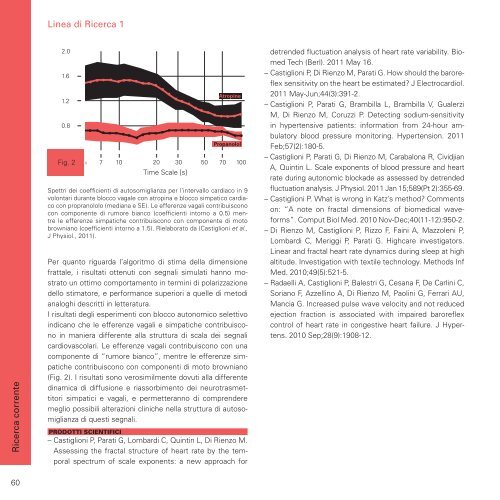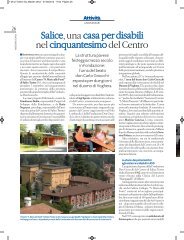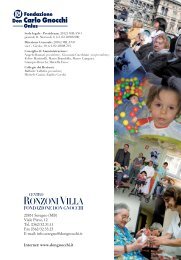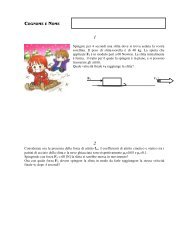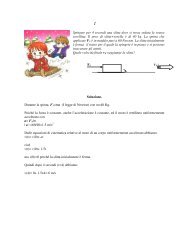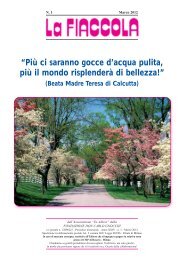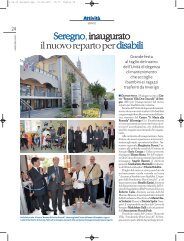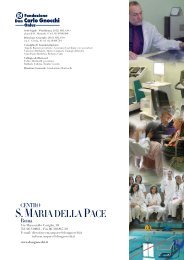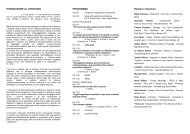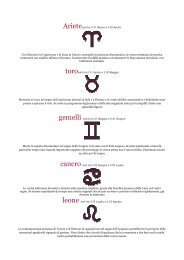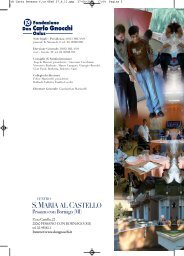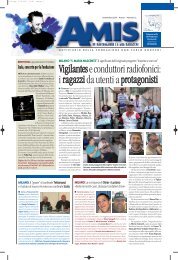Linea di Ricerca 1 - Fondazione Don Carlo Gnocchi
Linea di Ricerca 1 - Fondazione Don Carlo Gnocchi
Linea di Ricerca 1 - Fondazione Don Carlo Gnocchi
Create successful ePaper yourself
Turn your PDF publications into a flip-book with our unique Google optimized e-Paper software.
<strong>Ricerca</strong> corrente<br />
60<br />
<strong>Linea</strong> <strong>di</strong> <strong>Ricerca</strong> 1<br />
2.0<br />
1.6<br />
1.2<br />
0.8<br />
Fig. 2<br />
5<br />
Atropine<br />
Propanolol<br />
7 10 20 30 50 70 100<br />
Time Scale [s]<br />
Spettri dei coefficienti <strong>di</strong> autosomiglianza per l’intervallo car<strong>di</strong>aco in 9<br />
volontari durante blocco vagale con atropina e blocco simpatico car<strong>di</strong>aco<br />
con propranololo (me<strong>di</strong>ana e SE). Le efferenze vagali contribuiscono<br />
con componente <strong>di</strong> rumore bianco (coefficienti intorno a 0.5) mentre<br />
le efferenze simpatiche contribuiscono con componente <strong>di</strong> moto<br />
browniano (coefficienti intorno a 1.5). Rielaborato da (Castiglioni et al.,<br />
J Physiol., 2011).<br />
Per quanto riguarda l’algoritmo <strong>di</strong> stima della <strong>di</strong>mensione<br />
frattale, i risultati ottenuti con segnali simulati hanno mostrato<br />
un ottimo comportamento in termini <strong>di</strong> polarizzazione<br />
dello stimatore, e performance superiori a quelle <strong>di</strong> meto<strong>di</strong><br />
analoghi descritti in letteratura.<br />
I risultati degli esperimenti con blocco autonomico selettivo<br />
in<strong>di</strong>cano che le efferenze vagali e simpatiche contribuiscono<br />
in maniera <strong>di</strong>fferente alla struttura <strong>di</strong> scala dei segnali<br />
car<strong>di</strong>ovascolari. Le efferenze vagali contribuiscono con una<br />
componente <strong>di</strong> “rumore bianco”, mentre le efferenze simpatiche<br />
contribuiscono con componenti <strong>di</strong> moto browniano<br />
(Fig. 2). I risultati sono verosimilmente dovuti alla <strong>di</strong>fferente<br />
<strong>di</strong>namica <strong>di</strong> <strong>di</strong>ffusione e riassorbimento dei neurotrasmettitori<br />
simpatici e vagali, e permetteranno <strong>di</strong> comprendere<br />
meglio possibili alterazioni cliniche nella struttura <strong>di</strong> autosomiglianza<br />
<strong>di</strong> questi segnali.<br />
PRODOTTI SCIENTIFICI<br />
– Castiglioni P, Parati G, Lombar<strong>di</strong> C, Quintin L, Di Rienzo M.<br />
Assessing the fractal structure of heart rate by the temporal<br />
spectrum of scale exponents: a new approach for<br />
detrended fluctuation analysis of heart rate variability. Biomed<br />
Tech (Berl). 2011 May 16.<br />
– Castiglioni P, Di Rienzo M, Parati G. How should the baroreflex<br />
sensitivity on the heart be estimated? J Electrocar<strong>di</strong>ol.<br />
2011 May-Jun;44(3):391-2.<br />
– Castiglioni P, Parati G, Brambilla L, Brambilla V, Gualerzi<br />
M, Di Rienzo M, Coruzzi P. Detecting so<strong>di</strong>um-sensitivity<br />
in hypertensive patients: information from 24-hour ambulatory<br />
blood pressure monitoring. Hypertension. 2011<br />
Feb;57(2):180-5.<br />
– Castiglioni P, Parati G, Di Rienzo M, Carabalona R, Cividjian<br />
A, Quintin L. Scale exponents of blood pressure and heart<br />
rate during autonomic blockade as assessed by detrended<br />
fluctuation analysis. J Physiol. 2011 Jan 15;589(Pt 2):355-69.<br />
– Castiglioni P. What is wrong in Katz’s method? Comments<br />
on: “A note on fractal <strong>di</strong>mensions of biome<strong>di</strong>cal waveforms”.<br />
Comput Biol Med. 2010 Nov-Dec;40(11-12):950-2.<br />
– Di Rienzo M, Castiglioni P, Rizzo F, Faini A, Mazzoleni P,<br />
Lombar<strong>di</strong> C, Meriggi P, Parati G. Highcare investigators.<br />
<strong>Linea</strong>r and fractal heart rate dynamics during sleep at high<br />
altitude. Investigation with textile technology. Methods Inf<br />
Med. 2010;49(5):521-5.<br />
– Radaelli A, Castiglioni P, Balestri G, Cesana F, De Carlini C,<br />
Soriano F, Azzellino A, Di Rienzo M, Paolini G, Ferrari AU,<br />
Mancia G. Increased pulse wave velocity and not reduced<br />
ejection fraction is associated with impaired baroreflex<br />
control of heart rate in congestive heart failure. J Hypertens.<br />
2010 Sep;28(9):1908-12.


